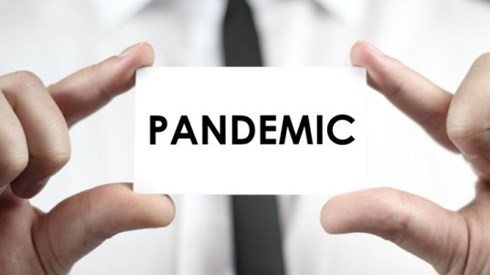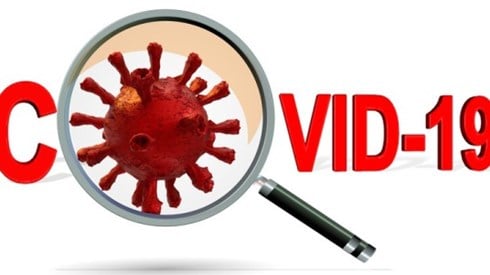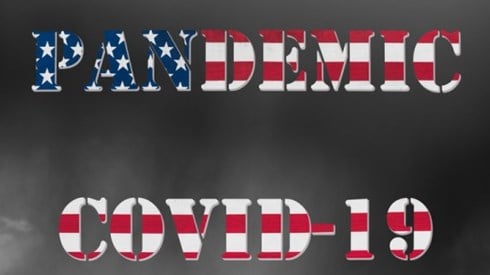Captive Insurance Could Provide Solutions to Some Pandemic Risk Issues

April 27, 2020

For all the challenges the COVID-19 pandemic is presenting to businesses, the insurance industry, and society, like other crises before it the pandemic may ultimately create opportunities for captive insurance.
"Captives always have their opportunity to shine when insurance market conditions become difficult," said Brady Young, president and CEO of Strategic Risk Solutions (SRS). Mr. Young made his remarks as part of a recent SRS webinar titled "Captive Insurance Response to a Pandemic."
Discussing current insurance challenges the pandemic is posing to businesses, Read Davis, regional president at McGriff, Seibels & Williams Inc., began with issues around economic continuation and business income.
"It's been pretty clear that the [insurers'] response to this has been pretty uniform," Mr. Davis said, noting that the primary hurdle for businesses making claims has been the need for physical damage to trigger business interruption coverage. When there's an argument that the pandemic is causing direct physical damage, insurers are calling on communicable disease exclusions, he said.
While there have been discussions in Congress and in some state legislatures to force insurers to pay pandemic-related business interruption claims, insurers have been fighting such efforts to force retroactive changes to their policy wording.
The majority of environmental policies also have exclusions for communicable diseases or bacteria, Mr. Davis said. Some policies, however, might have favorable wording that could be interpreted as affirming coverage of pandemic losses, he said. Mr. Davis said his firm is advising clients to file claims on those policies, even if the language hasn't been fully vetted as to whether it offers coverage.
"I don't believe there's a need to wait to file a claim until ... an exclusion has been vetted," he said. "I think the [insurers] are going to be like the Payroll Protection Act—there's going to be a lineup of folks there getting in place to have some of these claims paid."
In the workers compensation area, historically there have been exclusions for "ordinary diseases of life," Mr. Davis said. "We are seeing several states now forcing coverage for essential workers as defined by state governors." There are also challenges to the ordinary diseases of life exclusions, he said.
Regarding general liability insurance, as states begin to reopen businesses one issue is "What are the challenges to prove negligence in the event that you haven't adhered to certain policies and cleaning procedures or social distancing procedures?" Mr. Davis said.
On the legislative front, Mr. Davis noted that the Risk and Insurance Management Society and other organizations are pushing for a pandemic reinsurance backstop like the Terrorism Risk Insurance Act. "Those would be mostly for future events," he said. There also have been bills that would create a "major event" definition that would allow any business interruption exclusion in policies to be lifted in the face of a crisis like a pandemic.
The insurance industry has argued that if it were forced to pay excluded business interruption (BI) claims it had never anticipated paying, it could cause the BI market to disappear or become cost prohibitive. "That would probably put us in a position where business interruption might not even be available going forward," Mr. Davis said.
Mr. Young noted that the current situation "puts a lot of pressure on existing insurance relationships."
"I would suggest that this is going to have a negative impact on the market," said Mr. Davis. Some insurers are already pulling back from certain industry groups such as travel and hospitality, he said, and some are making policies more restrictive. "When people start to move in a nervous manner, they become more restrictive," he said.
As the pandemic progresses, for now for most captive insurance company owners and key service providers, it's business as usual, Mr. Young said. Claims are being processed, financial reports issued, renewals negotiated, etc. Meanwhile, regulators are being practical and flexible.
One area where some captives are being affected is in the impact on balance sheets due to investment market volatility. Those investment results and consequences vary client by client based on investment policies and asset allocations, Mr. Young said.
The claims impact on captives varies by industry, Mr. Young said. Some restaurant captives, for example, are seeing a significant decline in workers compensation claims activity because they're not serving people in their restaurants during business shutdowns. On the other hand, workers compensation exposure is up for nursing home and hospital captives, as is professional liability exposure.
In medical stop loss, many of those being hospitalized for COVID-19 are not those covered through employers' medical stop loss captives, according to Mr. Young. "To some extent, the claims experience on medical stop loss has been better because of this," he said, though there's the potential for a claims "tsunami" once elective procedures postponed because of the pandemic are resumed.
"Probably one of the more interesting areas is on the small captive area," Mr. Young said. Many of those captive insurance companies might have BI or extra expense coverage for loss of a key customer or supplier; administrative actions by a local, state, or federal agency; or difference in conditions and difference in limits, he said. "A lot of these clients might have all three of these coverages among the six, seven, or eight coverages they have in place," Mr. Young said. There might be sublimits for each coverage or an annual aggregate, he said.
"They were set up to deal with something with low probability that wasn't expected to happen very often and now the captive is going to provide some much-needed liquidity," Mr. Young said.
There might be opportunities for some captive insurance companies to retroactively add coverages for areas where their parents are experiencing uncovered losses, Mr. Young said. "I think there arguably is an opportunity to try and add that risk to your captive and provide some future protection," he said.
Companies interested in doing so should work closely with actuaries to analyze the risk, price it, develop appropriate documentation, and conduct stress tests to satisfy regulators. For clients with excess surplus, it might be worth the discussion, Mr. Young said.
"People also say times are really tough, we've got a lot of money sitting in the captive, how can we get access to that surplus," Mr. Young said. "Clearly, if you have excess surplus you can go to the regulators and ask to issue a dividend. That happens on a regular basis." Dividends are subject to tax, he noted, "but on the other hand if you need the funds that's probably the least of your worries."
"There's no one answer that's right in all situations but certainly options that exist for clients that are really challenged from a liquidity point of view," Mr. Young said.
Among the actuarial pricing and reserving considerations for the COVID-19 pandemic, Joel Chansky, principal and consulting actuary at Milliman, noted that there are reductions in many exposures as there are fewer cars on the road, payrolls are down, and retail sales are down with fewer people in stores.
In setting reserves, "Reductions in exposures might cause us to reduce our development factors," he said.
On the pricing side, many of the same issues that affect reserving will flow into the pricing process, Mr. Chansky said. A key question is "What's the change in exposure, all else equal, from COVID-19?" Mr. Chansky said. "It's a really tricky exercise to try to do pricing right now."
Mr. Chansky said there is the possibility that insurers will increase rates to address premium losses due to lower exposures. "That could be an opportunity for captives," he said. He added that he expects to see captive insurance companies becoming more active in the second half of 2020 in trying to respond to COVID-19. "Price increases by insurers are just another opportunity for captives," he said.
While the pandemic creates considerable challenges, it also creates opportunities for the captive insurance industry to help provide solutions. "That's one of the trademarks of the captive world for the last 40 or 50 years," Mr. Young said.
"I would encourage all of us to try to remain as calm as possible, try to be level headed, look at the problem, try to break it down in pieces, try to see solutions, try to help our clients that own captives or could possibly use captives to solve this problem and others," Mr. Young said.
April 27, 2020


